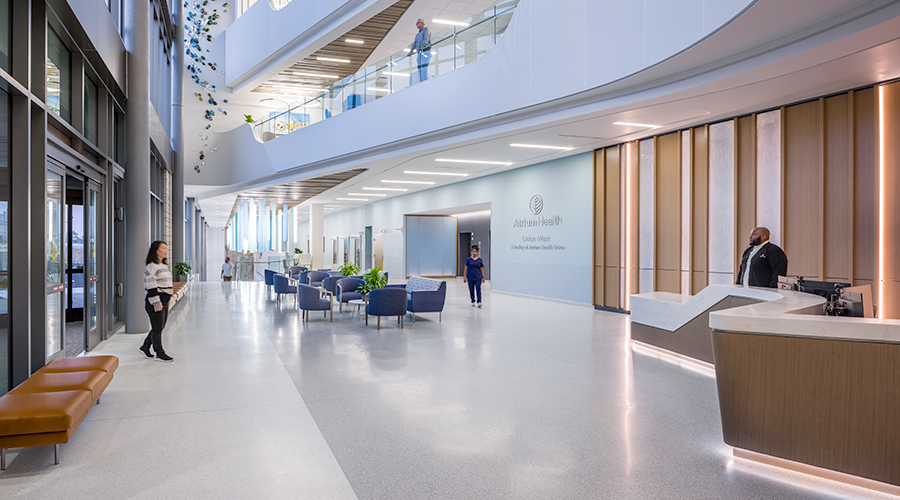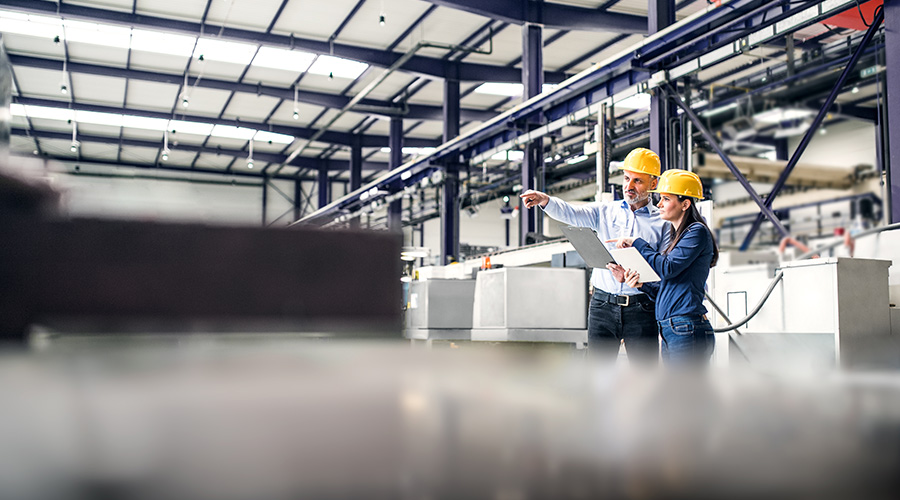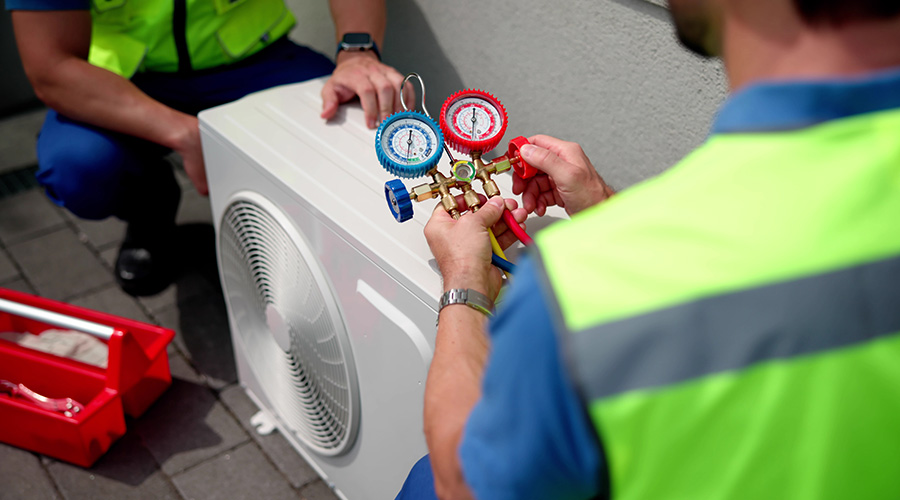When designing healthcare projects, it can be especially challenging to find finishes suitable for a clinical environment that are also healthy and sustainable. Specifying the most appropriate materials involves a strategic balance of multiple and often competing factors regardless of the project type, but healthcare projects in particular have heightened requirements for finishes.
These facilities' environments are diverse and demanding, and they require designers to weigh aesthetic and functional goals equally. Designers need to create a visually welcoming environment and project a sense of calm for stressed patients and families and busy staff. At the same time, products must be able to withstand stringent cleaning processes and harsh chemicals over a long life cycle.
As knowledge of material health grows, material selection gets even more complicated. Some widely used products chosen for meeting these challenges of aesthetics and durability are simultaneously threatening to human and environmental health, and this side of the equation can be underpublicized.
Evaluating the many variables behind material selection can be overwhelming. One strategy involves material selection informed by the latest research on material health and sustainability.
‘Commonly used’ might not mean healthy
A product’s frequent appearance in healthcare settings does not guarantee it is healthy for inhabitants or the environment. Solid surface is a prime example of a building product favored in healthcare settings for durability and aesthetics that has issues in other categories.
Solid surface is a synthetic product primarily composed of acrylic polymers. It is popular because it solves one of the healthcare environment’s challenges: quaternary cleaners. In a healthcare setting, countertops are constantly wiped with sanitary wipes, but the harsh chemicals — quaternary ammonium compounds (QAC) — that make these wipes effective are problematic for most surfaces.
If cleaning instructions are not followed precisely, the cleaner will air dry and deposit salt crystals. On porous or soft surfaces, these salt crystals dry out the material and introduce cracks, which are perfect hiding spaces and breeding grounds for infections, such as Methicillin-resistant Staphylococcus aureus (MRSA). Solid surface is a non-porous solution that provides a more durable, hygienic finish. Besides this durability, solid surface is stain-resistant and available in a range of colors and patterns.
While it is a popular choice, it is not a healthy material. Although solid surface can handle the cleaning process, most of these counters are fabricated with ingredients that are hazardous and cancer-causing during the various stages of manufacturing and installation.
Architects and designers understand there are drawbacks to any product. What is important when selecting materials is having as much information as possible so difficult decisions are at least informed decisions.
Carbon reduction and industry transparency
Product manufacturing alone makes up 31 percent of global carbon emissions. Carbon reduction is critical to the overall health of a project and the built environment. Embodied carbon— the greenhouse gas (GHG) emissions from a building’s construction, including manufacturing, transportation, installation and material disposal — needs to be a driving factor in the material selection process for a truly healthy environment.
LEED and WELL rating systems do not paint a complete picture of sustainability, and designers need to look beyond them. But it is important to note that the data necessary to evaluate many products is not publicly available. Universally thorough material evaluations will be the result of a continued push for increased transparency.
The more transparent manufacturers are regarding their products’ impact, the easier it is for designers to make educated decisions and approach carbon neutral or even carbon negative projects. To this end, the design industry needs to continue working with manufacturers to bolster the nutritional legend of products with carbon dioxide equivalents, a metric that compares global-warming potential across different types of emissions.
Evaluating sustainability and health
Increasing transparency is an ongoing effort, but there are current methods to help designers make more sustainable selections. At the beginning of a project, designers can choose a material category and use the following factors to narrow a preliminary list of products:
- Understand the percentage of the project that will be affected by the product.
- Finishes that will be installed across a large percentage of a project’s square footage are good starting points for lowering the overall embodied carbon. This typically means ceiling tile, gypsum wall board, flooring, carpet tiles and paint.
- Evaluate the manufacturing location and its distance from the project site.
- Transporting products increases the overall carbon emissions footprint. It is important to evaluate the distance between the project and the manufacturing location.
- Assess recycled materials and content, both pre- and post-consumer.
- Conduct a life-cycle assessment, and calculate the ratio of renewable to non-renewable energy consumed by a product.
- Research Type III Environmental Product Declarations (EPD).
EPDs list key environmental parameters, including global warming, primary energy demand, and post-consumer recycled content. Designers should opt for products with EPDs showing low or no global warming potential per functional unit. While evaluating an EPD, it is important to review a few factors to confirm the information is current, comparable and reviewed by other environmental certifications.
Designers can use several resources to weigh factors such as hazardous substances, recycled content, manufacturing location and renewable energy use in the material selection process. Additional resources include:
The goal for designers is to turn over facilities that serve the client, occupants and the community for a long time. To do this, the design team must specify building materials that are abuse-resistant and visually timeless without sacrificing health and sustainability.
Advancements in material health research and transparency enable a more sustainable and informed approach to design decision-making. It is important to continue collaborating with industry partners to improve specifications and material transparency and push manufacturers to continue producing the best products.
Jolene Mudri, NCIDQ, IIDA, LEED AP, is a senior project manager and senior associate with Perkins&Will.

 State of the Facilities Management Industry in 2025
State of the Facilities Management Industry in 2025 City of Hope to Open New Cancer Specialty Hospital in California
City of Hope to Open New Cancer Specialty Hospital in California Montefiore Einstein Opening New Inpatient Center for Youth in the Bronx
Montefiore Einstein Opening New Inpatient Center for Youth in the Bronx Skill Stacking: How Micro-Credentials Are Reshaping Trades
Skill Stacking: How Micro-Credentials Are Reshaping Trades Prima Medicine Opens New Location in Tysons, Virginia
Prima Medicine Opens New Location in Tysons, Virginia